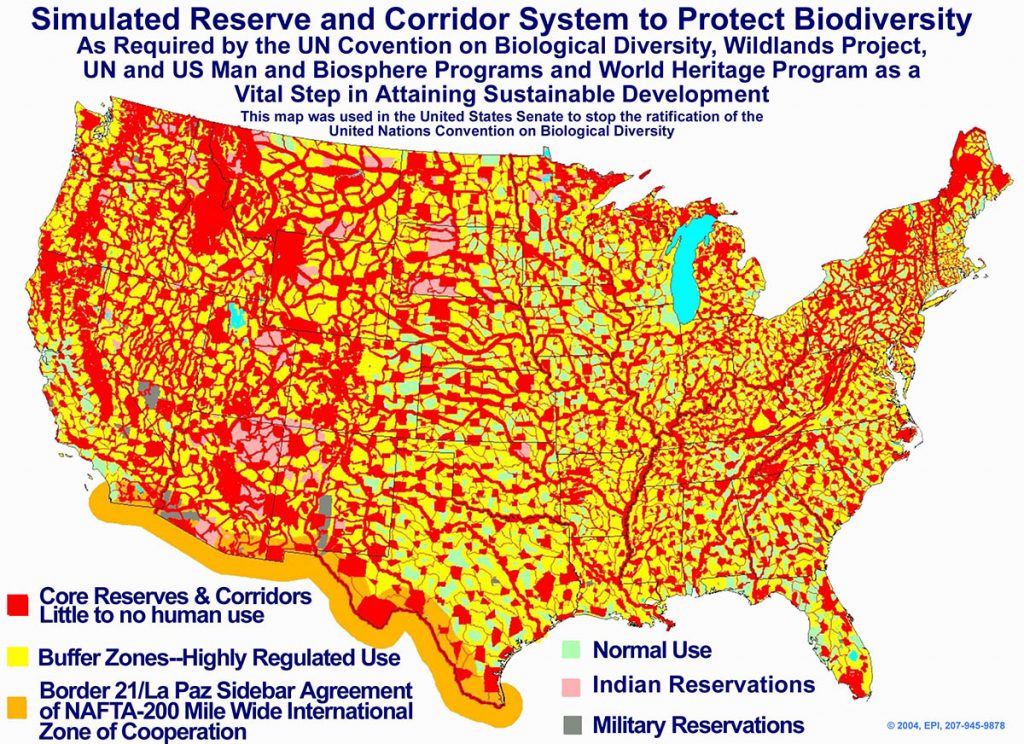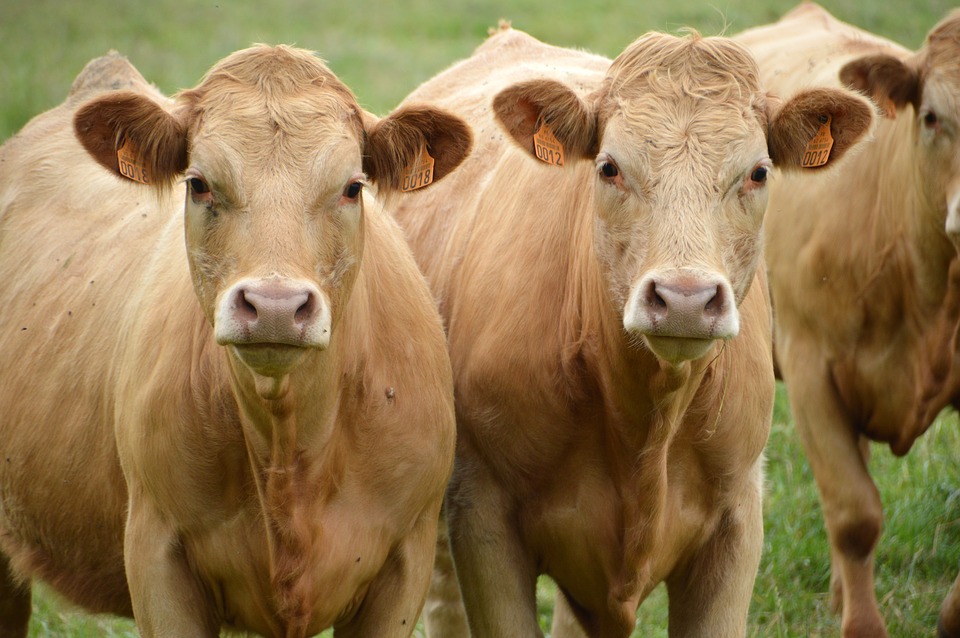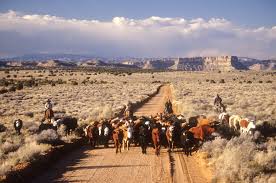Global Warping: Separating the information from the mythinformation
Words and Photos by Sierra D. Stoneberg Holt, Ph.D.
Originally published in the Summer 2009 edition of RANGE magazine
The greatest “global warming/carbon sequestration” myth is that only a select few can understand it. You are told that you must be “for” or “against” it. The truth is that once you’ve been reminded of a little basic chemistry and biology you can understand the issues, weigh the arguments, and separate for yourself the information from the balderdash.
1. Put on your carbon-colored glasses.

What is carbon and where is it? A lot is in limestone and related rocks (calcium carbonate). Some is in the air as carbon dioxide (and other gases). Much of the rest makes up everything that is or was alive. Sugars and starches and proteins all have carbon chain backbones. When plants photosynthesize, they use the sun’s energy to string carbon dioxide from the air into carbon chains. Metabolism breaks the chains, releases the energy, and fuels life. The carbon returns to the atmosphere. When something eats plants or animals, it uses their carbon chains as building blocks and as an energy source. When something rots, its carbon chains are broken by bacteria and fungi. Carbon leaves the atmosphere through photosynthesis and returns to the atmosphere (sometimes after having been eaten) through respiration, burning, or decomposition. [Carbon emissions photograph]



2. Plants are alive, too.
There is a common misconception that plants are just little green vacuum cleaners sucking carbon dioxide out of the air. They do photosynthesize. However, they are also alive. That means that, like ours, their mitochondria break carbon chains for energy. During the day, green plants bind carbon dioxide. Day and night, like all living things, they breathe in oxygen and breathe out carbon dioxide. Is your plant young and growing? It is binding more carbon than it is breathing out: the added biomass is built from the extra carbons. Is your plant middle-aged and not growing? Its carbon activities are balanced. Is your plant dying and decaying? The carbon that it bound in its youth is being returned to the atmosphere.
3. There’s carbon and then there’s carbon.
What we’ve just described is the living carbon cycle. Sometimes carbons step out of this cycle, lots of carbons. Five hundred fifty million years ago, our atmosphere probably contained ten to thirty times more carbon than today. Almost all of that carbon was converted to limestone and other rocks by sea creatures. This carbon can be released by processes like volcanism that humans don’t have much control over.
Some hundred million years ago certain swamp plants didn’t decay (or burn or be eaten). Instead the plants became fossil fuels like coal and oil. Fossil fuels seldom decay, aren’t normally eaten, and, if buried, rarely burn. Most of the atmosphere’s remaining carbon was locked up in fossil fuels.
The tiny fraction of carbons that remained continued to cycle from the atmosphere to plants (sometimes on to animals) and then back to the atmosphere. Life on Earth adapted to the new, much lower-carbon, atmosphere. To help us distinguish the sources, we can call the carbon that never stopped cycling L-carbon for “living”, the carbon trapped in fossil fuels “F-carbon“, and the carbon trapped in rocks “R-carbon“. When we burn fossil fuels, we release F-carbon, which makes our atmosphere more like the one hundreds of millions of years ago.
4. What exactly are we changing?
The popular alarmist term is “global warming”. It implies that the situation is simple and obvious. More cautious types use “global climate change”. I prefer “global atmospheric change”. Simply, by releasing F–carbon into our lower-carbon atmosphere, we are re-creating an ancient higher-carbon atmosphere. Whether this will be disastrous or beneficial (or have no effect) is a matter of opinion with convincing arguments on all sides. Personally, I am a conservative and am in no hurry to change the atmosphere. The important point, however, is that we humans shouldn’t give ourselves too much credit. Most carbon is R-carbon that we have little control over. Even if we burned every scrap of fossil fuel on the planet, the change to our atmosphere would pale to insignificance beside the changes that The Boss has already made and could again.
5. Proposing L-carbon solutions to an F-carbon problem.
When we burn (and release into the air) ancient F–carbons, we are recreating an ancient atmosphere, different from our own, that may not be ideal for us. Many of the solutions being proposed today are L-carbon solutions, which rely upon sequestering carbon in plants living right now or upon changing the route L-carbons take from plants back to the atmosphere. Most amount to rearranging deck chairs on the Titanic. L-carbons are in a cyclical balance, which is completely different from the permanently removed F–carbons that we release when we burn fossil fuels. If someone claims to have a solution to atmospheric change, pay close attention to see if they are proposing an L-carbon solution. If so, be wary. Is this a person with ulterior motives, who is using “global warming” to push a hidden agenda? Is it someone with no real understanding of “climate change”, trying to sound impressive to anyone that knows less? Is it a genuinely concerned person confused by misinformation? Or is it a visionary genius proposing an imaginative, useful solution?
6. The breathing tax
Some of the most useless solutions are those that tinker with the route carbons take from today’s plants back to the atmosphere. Among these misguided efforts is a proposed Environmental Protection Agency fee on carbon emissions, regardless of source. The proposed regulations would treat burning F–carbon fossil fuels the same as exhaling L-carbons. The regulations would apply to anything releasing more than 100 tons of carbon per year: 50 beef cattle, 25 dairy cattle, 500 acres of corn, the House of Representatives. Although all those entities do breathe, none of them eats coal and drinks gasoline (unless petroleum-based synthetic fertilizer was applied to the corn). They are exhaling L-carbons and are irrelevant to atmospheric change.
Removing cattle is a popular incarnation of the breathing tax. Cattle eat carbons in grass and then exhale or burp many of them back into the atmosphere. What happens to the grasses’ carbons with no cattle? The grass is eaten by wildlife (and exhaled and burped into the atmosphere), or it burns (and goes into the atmosphere), or it dies and decays (and is released into the atmosphere). Carbon molecules couldn’t care less if they pass through a cow or not.
7. It’s not sequestration if it doesn’t stay sequestered.

Many people are concerned about sequestering carbons, that is, getting plants to take them up, but they seldom worry about what happens next. If the plant turns into coal, the sequestration is nearly permanent, barring an Industrial Revolution. Some long-lived trees can sequester carbons in their wood for hundreds of years. If, at the end of the tree’s life, you turn it into quality paper in an important book, you can extend that by some more centuries, but eventually the book will burn, decay, or be eaten by mice. The carbon sequestered in a fallen crabapple probably won’t stay sequestered until spring. Basically, there is little the plants of today can do with L-carbon that could match the hundreds of millions of years of sequestration of F–carbons in fossil fuels. When evaluating schemes for sequestering carbon, you need to question what happens to it once it is sequestered.
8. Regard the simple salt flat.


Tinkering with L-carbons is nickeling and diming, but sometimes enough nickels and dimes add up to an impressive sum. Basically, a given ecosystem is in carbon balance, but some ecosystems hold more carbons than others. Consider a salt flat. A few saline tolerant bacteria take up a tiny trickle of carbon and release a tiny trickle back into the air. Now consider a healthy rangeland full of grasses, forbs, and shrubs with bacteria, fungi, roots, dung, bits of wood and grass, and insects in the soil, and rodents, birds, insects, large and small wildlife, and domestic animals roaming the surface. The rangeland is gulping in prodigious amounts of carbon, but it is also breathing it back out in billowing clouds. All that biomass is sequestered carbon, but the rangeland will not sequester any additional carbon. Suppose the rangeland has 100 units of carbon in its living things at any one time, and the salt flat has 1 unit. If you change a rangeland to a salt flat, you release 99 units of carbon. If you change a salt flat to a rangeland, you sequester 99 units of carbon. Where misconceptions arise is forgetting that this is a one-time-only benefit. You don’t sequester an additional 99 units of carbon in your rangeland next year. Once it is established, it will stay in balance. As long as you keep increasing the biomass your site supports (or increasing the depth of the organic layer in the soil), you will sequester more carbon, but once you have reached the site’s potential, you can’t soak up any more.
9. Let’s go plant a tree
Some people claim to “earn” the right to burn tons of F–carbons in big houses and fancy jets by planting trees to re-sequester the carbon. If those trees do not increase the overall biomass potential of the site, they do absolutely nothing. Even if the planted trees increase the biomass potential of the site, they give up their sequestered carbons once they rot or burn.
10. This forest was brought to you by…
Many L-carbon sequestration schemes don’t even involve the one-time benefit of changing a salt flat to a grassland. They include paying ranchers to sequester carbon (and not turn their grassland into a salt flat) and buying part of a productive ecosystem, like a forest (and not making a salt flat of it.) These “solutions” amount to pledging to not reduce site production potential. This is nice but does not address un-sequestering F–carbons.
11. Laughing all the way to the oil field.
Not only do you have to know what happens after carbon is sequestered, you have to question what happened before. This is the shortfall of many bio-fuel schemes. The goal is to replace fossil fuels made of F–carbons with bio-fuels made of L-carbons (heading back to the atmosphere regardless). So far, so good. But if you burn more than a gallon of F–carbon (think plowing, pesticides, fertilizer, harvesting, transporting, distilling) making a gallon of bio-fuel for your car, you would be better off driving on plain old gasoline in the first place. A bad bio-fuel plan is ideal for oil companies. It could increase our dependence upon fossil fuels and mask that dependence behind politically correct bio-fuels.
12. Conclusions?
If we stopped burning fossil fuels today, we would stop changing the atmosphere. We would be left with a balanced L-carbon cycle and today’s atmosphere which isn’t “normal”, but is one we can live with. To reverse atmospheric change, we have to mimic the effects of fossil fuel (or limestone) formation. We can plant trees (or scrub carbon out of power plant emissions), but if we don’t ensure they can never rot, burn, or be eaten, their carbon will eventually return to the atmosphere.
To recap: plants pull carbon dioxide out of the air and trap it in carbon chains (L-carbons). Normally, these trapped carbons then bounce around through the food chain and back into the air. Sometimes this process breaks down. When carbons are trapped permanently, the atmosphere changes. Most carbon was permanently trapped in rocks (R-carbon). In ancient swamps, some plants’ carbons were “permanently” trapped in fossil fuels (F-carbon). Humans have little control over R-carbon. By burning fossil fuels, humans can release F-carbon and change the atmosphere back. Today’s plants and animals (including cows) cannot increase atmospheric carbon by breathing or burping. If average people understood more about what is happening, they would be less susceptible to scare tactics and non-solutions based upon hidden agendas.
Sierra Dawn Stoneberg Holt is a native Montanan. She obtained a Ph.D. in botany (and an education about Communism) in the Czech Republic and is now raising the sixth generation on a family ranch in northeastern Montana.




Carbon is Not a pollutant.
Perhaps focus on toxic substances that grasslands and forests Do Sequester ( trap ).
SOX sulfur dioxide. NOX nitrous oxides. And
Mercury. Are All good examples.
And the afore are theee highest paying pollutants to Sequester ( on the Real Global Pollutants Offset Markets ) too.
Sad thing bout the crooked ole USA:
Their chicago climate exchange was just another market hoax.
Pres Bush Jr. Paid the Chicago climate exchange $278 Million to offset the USA govt supposed carbon emissions.
AND after paid that , the Chicago climate exchange quietly disappeared.
I’m still disappointed bout the supposed Chicago climate exchange.
I enrolled 412,000 acres of rangeland of which sequestered over 4,000,000 tons of carbon w Chicago climate exchange and of course they did not pay the $28,000,000 owed us.